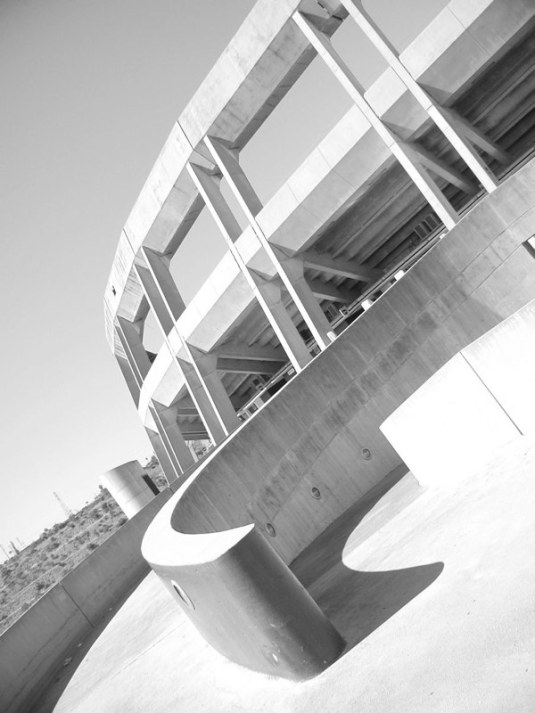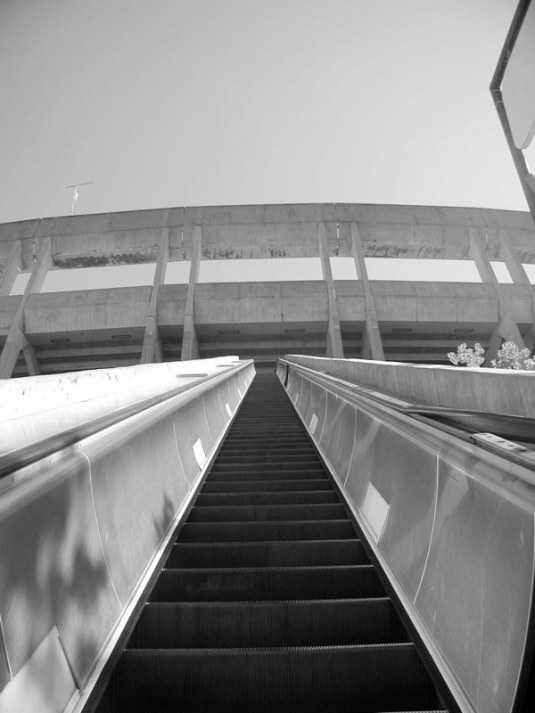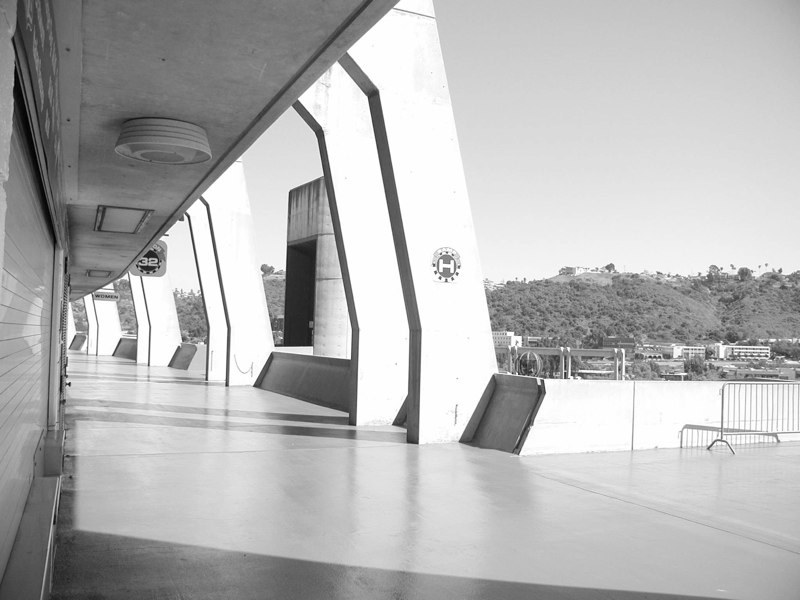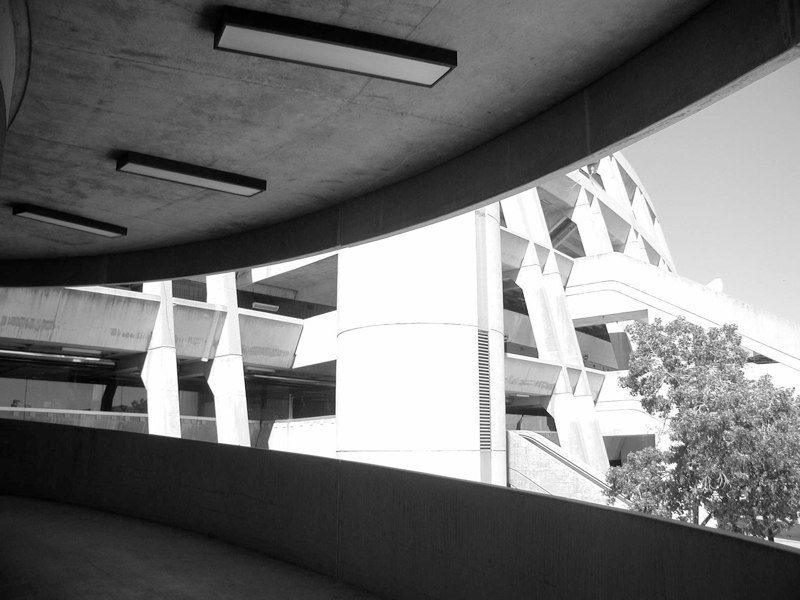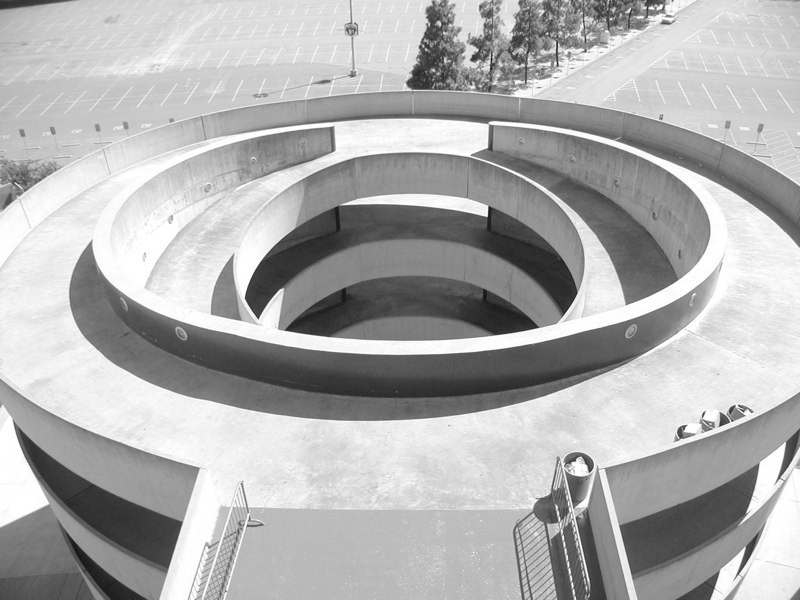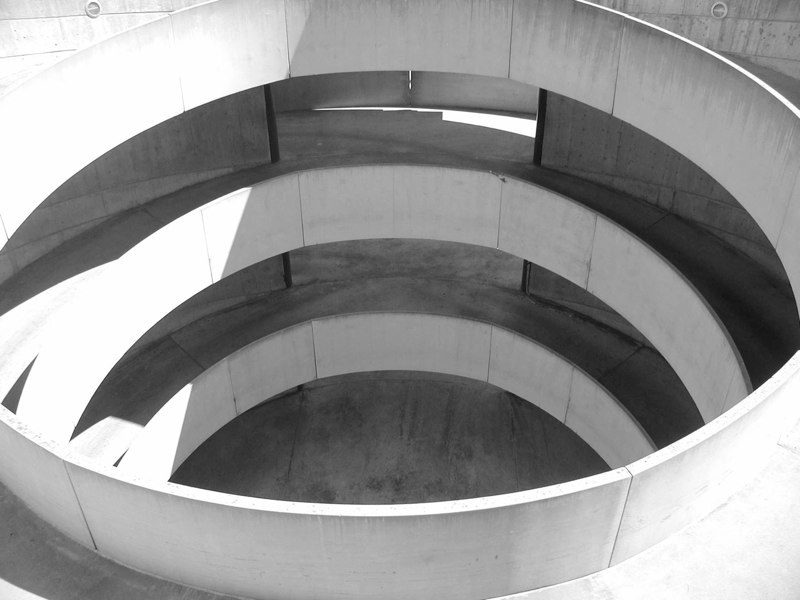Frank L. Hope and Associates (Gary Allen): San Diego Stadium (today: SDCCU Stadium), 1965C–1967
- San Diego, California, USA, Show on map
- #SPO #North America
-
The original stadium, sitting in a valley surrounded by hills, had a powerful enframed view of the mountains to the east. Unfortunately, additions to the stadium in 1984 and 1997 blocked this view. The principal designer of the stadium was Gary Allen, who spent his formative years in the office of Philip Johnson in New York City. In conjunction with structural engineer Steve Ermancoff, the design exhibits strong sculptural shapes and clarity of form. Because the engineering was beyond the capabilities of the City of San Diego Building Department, the architecture and engineering firms provided their own plan check. Pre-cast concrete and pre-wired light towers, dynamic spiral concrete pedestrian ramps and the world’s longest exterior escalator were innovative design features at the time. The form of the stadium is made up of eight concentric circles providing excellent sight lines for viewing. As the political-cultural trend of privatizing public spaces continues, this architectural work stands as a testament to the collective civic optimism and pride of 1960’s San Diego. Written by John Eisenhart
-
San Diego Stadium was one of the few remaining mid-century designed multi-purpose stadiums left in the United States. Most pre-1970's stadiums have already been demolished and replaced with private or semi-public stadiums. Winner of the AIA Award for outstanding design in 1969 (the first time a San Diego firm won the award). However, this building was also gradually threatened with demolition. This is why SOHO (Save Our Heritage Organization), a local historic preservation group, had the stadium added to their most endangered list in 2018 and they have started to advocate in favor of keeping the structure through social media. Unfortunately without success: after the Chargers (American football team) moved to Los Angeles, the stadium stood empty, was closed at the beginning of 2020 and sold to San Diego State University. The stadium was demolished between December 2020 and March 2021. A new football stadium was built a few meters away from the construction site in August of 2020 (last updated on February 5, 2025).

